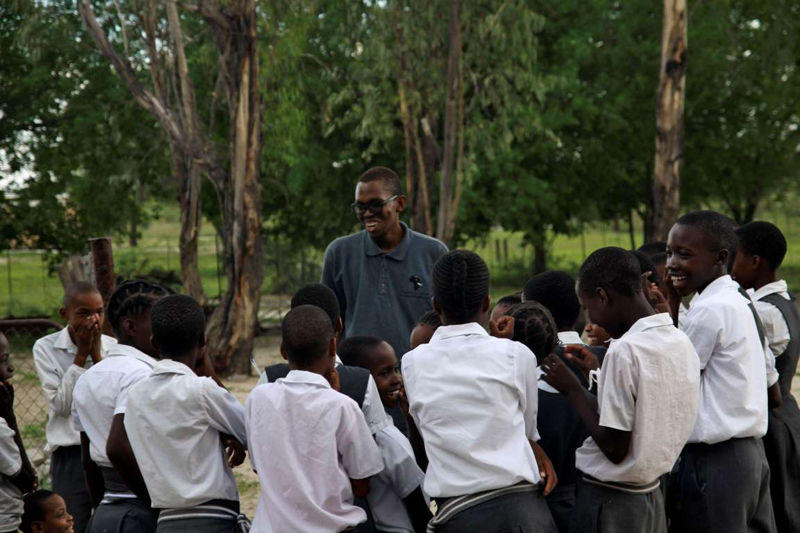
By Allison Singer, Time for Kids
The elephants stood face-to-face in a cloud of dust. Their big ears fanned out. Their tusks almost locked.
A group of schoolkids gazed in awe from a truck. They had come from a village just outside Makgadikgadi Pans National Park, in Botswana, Africa. “Are the elephants fighting?” someone asked.
“No, it’s a game,” another child said. “They’re playing.”
Kolobetso, 13, was quiet. “She’d grown up with a fear that elephants are dangerous,” Walona Sehularo told TIME for Kids. He was also in the truck. He works with Elephants for Africa (EFA). The group is trying to protect elephants and help people live peacefully alongside them.
 |
| © COURTESY ELEPHANTS FOR AFRICA I SPY Students view wildlife from a covered vehicle on a trip with Elephants for Africa. |
In parts of rural Africa, elephants roam freely. They often come into contact with people. Many people fear them. Some see them as pests. Conflict between people and elephants is common.
EFA wants to change that. It hopes to inspire young people to become conservation leaders. “I want to instill in them a sense of ownership over their environment,” Sehularo says.
Sharing the Land
Threatened by poaching in other parts of Africa, elephants have long found safety in Botswana. The country has about 130,000 elephants. That is more than any other country in Africa. Many can be found along the Boteti River.
 |
| © COURTESY ELEPHANTS FOR AFRICA A BIG SPLASH A group of male elephants takes a dip in the Boteti River, in Botswana. |
But elephants also wander onto farms. They eat and trample crops. In some cases, farmers respond by killing them.
Kate Evans is EFA’s founder. “Farmers don’t want to hurt elephants,” she says. “They just want to produce enough crops to feed their families and to sell at market.”
Change of Heart
Botswana’s elephants attract tourists to Makgadikgadi Pans. But few local children can afford to visit. By leading them on trips there, EFA aims to teach kids to love the park and its wildlife. This might even get kids interested in careers as park officers, guides, or researchers. When Kolobetso and her classmates toured the park, an elephant headed straight for the truck, defending its herd. Then it walked away. The kids were amazed. “It was one of those moments you cannot explain,” Sehularo says. “It fills you with an indescribable joy.”
 |
| © COURTESY ELEPHANTS FOR AFRICA LAUGH AND LEARN Walona Sehularo shares a laugh with local schoolkids. |
What about Kolobetso? She started to have fun. She even said she would like to come back. Sehularo felt he was making a difference. He says, “Many in my country think, ‘Why should I care about the animals?’ But the only way things get better is if people care.”
Sidebar: On the Move
 |
| © MAPS BY JOE LEMONNIER FOR TIME FOR KIDS |
Botswana’s Boteti River flows along the western edge of Makgadikgadi Pans National Park. During the dry season, little water flows in other places. So the river attracts large numbers of elephants.
Researchers say the threat of poaching in surrounding countries has driven more and more elephants into Botswana. Much of the land is protected. For now, the country may be the safest place on Earth for elephants.






















